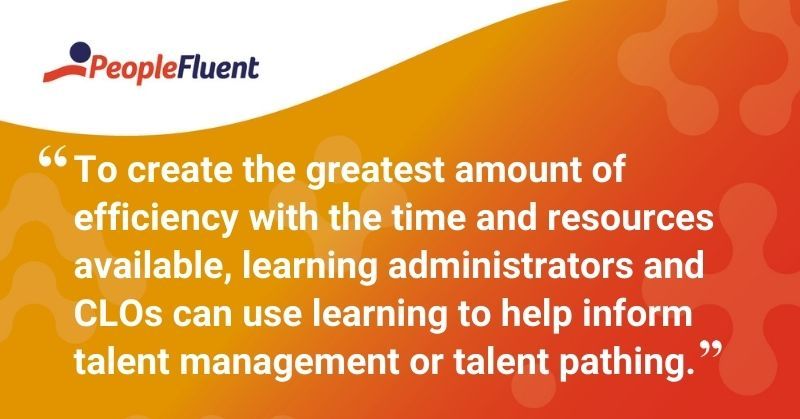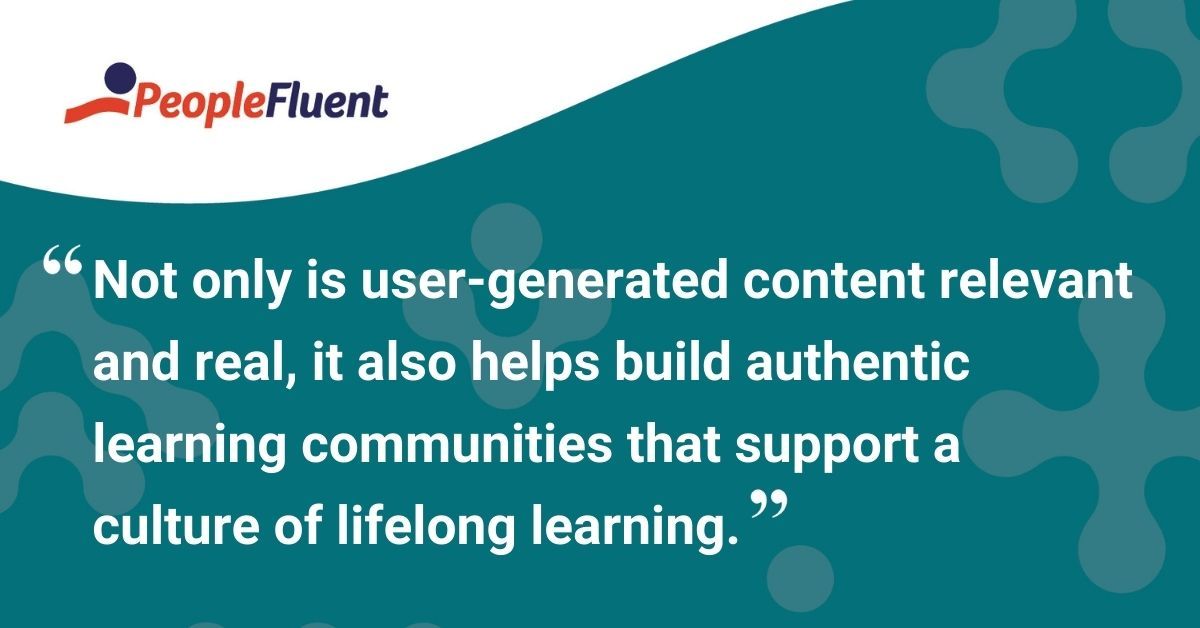Published: Oct 15, 2020Time to read: 7mins Category: Learning
Learning From Each Other: How Learning Design Can Benefit Talent Paths
In the final part of the frontline education series, ‘Healthcare Voices: Learning From Each Other’, Dawn Baron, Senior Strategic Marketing Manager at PeopleFluent, was joined by healthcare learning professionals from across the US. The group shared their current challenges and offered tips for designing and delivering various learning modules to frontline workers, providers at clinical research sites, and essential teams.
The pandemic has upended and redirected the way we all work and learn. One of the biggest challenges facing L&D leaders in healthcare organizations is an increased need to design learning content that is both relevant and accessible in the flow of work.
With many frontline workers separated from colleagues and even family for extended periods of time, human connection is just as critical to their job functions as compliance training. And, many people are reporting that they feel ‘Zoomed out’ from meeting and learning virtually.
As I listened to guest speakers who represent various American healthcare organizations, it was apparent that each of them shared a passion: building community while engaging and supporting their dispersed, frontline teams. Let’s dive into the key takeaways of how healthcare leaders are doing just that.
More from the series: ‘How to Design a Distance-Friendly Blended Learning Experience’
Curate Content via Adaptive Learning Design
Frank Pietrantoni, Director for the Office of Health Professions Education at Nebraska Medicine, explained how the organization has been providing ‘adaptive learning’. Adaptive learning relies on computer algorithms to manage the interaction between a learner’s needs and the delivery of relevant, customized learning materials. A simple way to think of it is like Netflix’s ‘recommended content’ feature.
To deliver its adaptive learning program, Nebraska Medicine used feedback from healthcare providers to identify a need for relevant learning materials. Specifically, physicians wanted learning modules that were more relevant to their practice areas and specific to the geographical regions they work in.
This was accomplished by gathering learner input from the LMS (via SCORM) and transferring this data to a learning record store (LRS) via xAPI. Learning designers were able to create relevant paths in the learner’s journey while concurrently gathering crucial data for the healthcare organization’s annual compliance reporting.
Based on learner input, the content will change due to the healthcare organization’s ability to transfer learning data via xAPI to an LRS. That's where ‘adaptive learning’ comes in as learners receive compliance training that is the right fit, examples that make sense, and modules that are tailored to the learner’s preferences based on data received via xAPI.

Related reading: ‘Learning Under Lockdown: How Healthcare Organizations Are Learning in the Now’
How Adaptive Learning Informs Content Design
From a compliance perspective, Nebraska Medicine leverages an LRS and xAPI to run a report that shows which specific pathways learners go down and what specific events they complete. For example, when designers add a “Learn More” button to a specific training module, they can measure which elective training items are popular amongst learners. These reports provide L&D with better insights and help them with the following:
- How to be better informed for subject matter experts
- Tailoring compliance training to engage learners more effectively
- Making a data-based decision if elective training needs to be made compulsory
Pietrantoni noted that SCORM doesn’t typically allow for this type of reporting. However, used concurrently with newer technologies like xAPI and LRSs, this adaptive learning design is possible.
How to Get More Engagement From Your LMS
To create the greatest amount of efficiency with the time and resources available, learning administrators and CLOs can use learning to help inform talent management or talent pathing. On this, Karen Stuart, Associate Chief Learning Officer at the Medical University of South Carolina (MUSC Health) shared the organization’s talent philosophy. The executive leadership has found a different way to prioritize how MUSC Health will differentiate people from a high-performer perspective. This relates to:
- Their roles and responsibilities
- What projects or tasks they’ve actually completed
- Where they are on the talent management grid
By connecting technology and traditional methods, leaders can see a worker’s performance and potential side-by-side. This unique approach to talent pathing led learning designers to design relevant content as it’s specific to a learner’s current role and the role they’re aspiring to.
On the technical side, Adrian Lamb, Learning System Administrator at VCU Health, expressed how he enjoys digging into the data. Looking at various types of learning modules and events the learners engaged with allowed administrators to decide where to place training.
This proved helpful when Lamb had to identify other ways to provide mandatory compliance training, previously held in-person. Whether a learner attended a limited in-person event, live webinars, or computer-based training via asynchronous instruction, the LMS allowed Lamb to report on where his learners preferred to consume materials.
When asked how they’re seeing an impact on learners, the key takeaways shared were:
- Learners are excited to go into the LMS for elective training materials
- Increased learning discovery and the ability to bolster soft skills is a driver of engagement
- Clinical teams are interested in developing skills that may not be directly related to their work

More on talent paths: ‘Rise of the Modern Talent Journey: Mapping the New Employee Experience’
Build Skills and Community With Learning
Business leaders are looking at what L&D teams and content designers are doing in a different light—more so than ever before. And they’re realizing the benefits. It’s all about giving people the opportunity to remain compliant and reskill themselves while also providing an opportunity for personal progress.
Lori Long, Managing Director of the Hemophilia Federation of America, spoke about how her ultimate responsibility is to deliver information to sufferers of blood disorders. One of the best ways this happens is through connecting and telling stories. “We lost our opportunity with the pandemic to bring our ‘Blood Brothers and Blood Sisters’ together to share their challenges and successes with coping and treating hemophilia. However, video and online learning and collaboration helped to maintain the knowledge, skills, and community.”
See how HFA does it: ‘Creating an Essential Resource for People With Bleeding Disorders’
The exposure to learning content for employees as well as the public may have once been intermittent, with annual meetings or annual assignments delivered from an LMS. However, as learners have been getting comfortable with the new relationship they’re building with technology, there’s been an increase in the appetite for learning. MUSC Health’s Karen Stuart said learners have been excited about the new catalogs L&D rolled out for talent management, career progression, career development, and design.
Another positive from remote learning is an uptick in user-generated learning content. One of the panelists said their teaching and training community has expanded as users become involved in producing learning content—from videos to images—with their smartphones. These learners have a sense of understanding that can’t necessarily be matched by L&D pros throughout the learning design process. Performing job responsibilities as SMEs while also looking through the lens as a learning content designer helps to build that community.
For example, a healthcare provider working in a COVID unit recorded video training for other nurses. To help alleviate anxieties, the nurse recorded video while she managed the everyday tasks, providing relevant information along the way. When L&D professionals published the unedited learning video, it elicited a great deal of interest and engagement.
Not only does this type of training help ensure it’s relevant, real, and takes exactly the time required, it also helps increase trust and confidence. This helps build authentic learning communities that support—ideally alongside a learning experience platform (LXP)—a culture of lifelong learning.
Keep reading: ‘5 Ways a Creator-Centric Approach Prepares L&D for a Changing Role’
Click here to access all four recordings from the ‘Build a Superior Virtual Learning Program Inside Your High-Compliance Environment’ webinar series, as well as supporting resources.
Special thanks to our guest speakers from Nebraska Medicine, SCL Health, Virginia Commonwealth University Health, Medical University of South Carolina, and the Hemophilia Federation of America. These companies are executing virtual learning programs for their frontline workers, essential teams, clinical research sites, and more.
Discover How Learning Builds Skills and Ensures Compliance
Design, deploy, track, analyze, and report on enterprise learning and compliance programs. PeopleFluent helps you execute your programs seamlessly, so employees upgrade their skills and you get results.